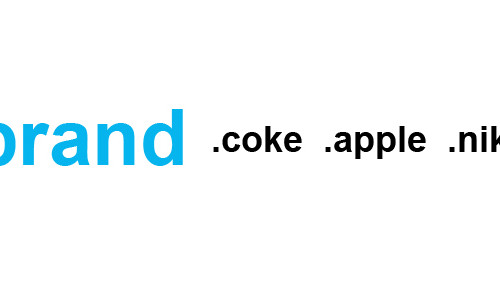The latest Internet innovation that allows business to manage and own their own top-level domain (TLD) officially opened its doors earlier this year. It’s called “dot Brand” and, since January, the Internet Corporation for Assigned Names and Numbers (ICANN) has been accepting applications from businesses who want to see their brand name of the right side of the dot in an Internet address. This means that we’ll soon be see branded domains. For example “.coke” alongside more familiar TLDs like “.com” and “.info”.
The introduction of dot Brand domains made headlines earlier this year and caused a fair share of controversy, rousing significant discussion about how its introduction will change the Internet and the consequences for businesses on either side of the debate. However, time is ticking away – very quickly — for companies to seize this limited opportunity. In fact, registrations of interest need to be made by 29 March 2012 (but applications can be submitted through 12 April 2012.)
These dates may come as a sharp surprise to brands still contemplating dot Brand. in a joint project with Vanson Bourne, we recently conducted a survey of 200 UK and US consumer-facing companies, looking at the intentions of brands in regards to applying for dot Brand. The results found that 44 percent are planning to apply for their own domain, yet more than a third of respondents did not know the deadlines to apply. Missing the boat on this round of applications may see businesses waiting up to a decade before they can apply again. And that’s bad news for the 71 percent of businesses who think dot Brand is an important trend to watch.
While the time to apply is indeed very tight, turning around an application during this limited timeframe is not impossible, particularly if companies consult an experienced registry provider to help with the 50 questions set out by ICANN. In fact, ICANN will only approve applications from businesses that can convince them they have the technical expertise available to effectively manage their TLD without jeopardising the security and stability of the Internet. And that’s why 22 of the 50 application questions are of a highly technical nature.
For companies still unsure of the benefits of a branded domain, there are two major arguments to consider.
First, enabling businesses to have their names on the right side of the dot – e.g., .tesco rather than tesco.com — means brands will possess greater regulation over their presence online and can control which partners and suppliers have access to their branded domain. Also, dot Brand domains offer greater promotional opportunities and possibilities for customer engagement. Brands can move away from Internet extensions that don’t add value to core brand identity and consumers will no longer be required to remember a long extension with numerous forward slashes in it. For example, consumers often trawl a website to find a particular promotion but now there is the possibility of “newpromo.topshop”, making the consumer’s online search easier and more intuitive.
Second, for those companies in industries plagued by counterfeiting and cybersquatting, dot Brand domains offer important initial steps to enhanced security on the Web. With dot Brand, trust can finally be transferred to the virtual space because consumers will know they are purchasing from a legitimate source. For example, no one can own “real.mulberry” other than Mulberry ,and Mulberry has complete control over who else can use its branded domain. Essentially, dot Brand domains give businesses the opportunity to instil the same level of trust they garner on the high street to the Internet, delivering customers a more secure route to purchase online.
While the decision to own and manage a TLD is not one any business can make on a whim, the time for deliberation is gone. Now is time is to ask: will I be on the right side of the dot?






